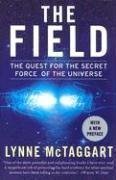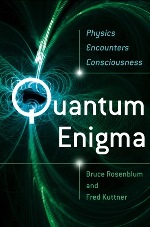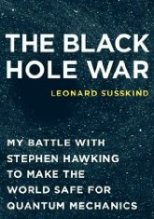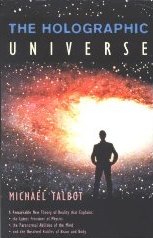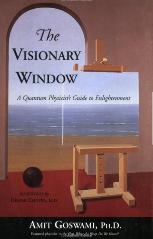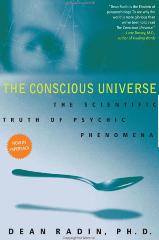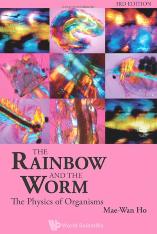Quantum physics, Zero-Point-Energy (ZPE) field, and the Holographic principle |
In recent years there has been quite a bit of scientific research into the body/mind connection which can help us to understand what it is and how it works. In her recent book on this subject titled "The Field. The quest for the secret force of the universe", investigative journalist Lynne McTaggart has collected a number of research findings into an easily read format. Her book suggests that there is a quantum connection between the earth, all living things and The Field she speaks of. Many other scientists, especially quantum physicists, have come to pretty much the same conclusion and are working to prove it with science. The Zero Point Energy (ZPE) field - an ocean of electromagnetic quantum fluctuations, is an accepted mainstream concept of quantum mechanics and takes place even at zero degrees Kelvin. The ZPE field connects everything in the universe. The Field offers a radically new view of the way our world and our bodies work. The human mind and body are not distinct and separate from their environment, but a packet of pulsating energy constantly interacting with this vast energy sea. This book is a must read ! Go to the websites www.lynnemctaggart.com and www.theintentionexperiment.com for more info. There is also a Dutch (NL) translation of The Field: "Het Veld" More scientific information about the "Zero Point Field", see www.zpenergy.com and www.calphysics.org and www.quantrek.com A must read is also the book "Quantum enigma". Trying to understand the atom, physicists built quantum mechanics and found, to their embarrassment, that their theory intimately connects consciousness with the physical world. "Quantum Enigma. Physics encounters Consciousness" explores what that implies and why some founders of the theory became the foremost objectors to it. Schrödinger showed that it “absurdly” allowed a cat to be in a “superposition” simultaneously dead and alive. Einstein derided the theory’s “spooky interactions.” With Bell’s theorem, we now know Schrödinger’s superpositions and Einstein’s spooky interactions indeed exist. Physics’ encounter with consciousness is its skeleton in the closet. Because the authors - physics professors Rosenblum and Kuttner - open the closet and examine the skeleton, theirs is a controversial book. Quantum Enigma’s description of the experimental quantum facts and the quantum theory explaining them is, however, undisputed. It’s interpreting what it means that’s controversial. Every interpretation of quantum physics encounters consciousness. Rosenblum and Kuttner therefore turn to exploring consciousness itself—and encounter quantum physics. Free will and anthropic principles become crucial issues, and the connection of consciousness with the cosmos suggested by some leading quantum cosmologists is mind-blowing. Highly recommended. Quantum theory is at the cornerstone of every natural science from physics, chemistry, biology and cosmology. It explains why stars shine, how photosynthesis works, it underpins all biological processes, and is at the root of how the universe came into existence. Now, what happens when something is sucked into a black hole? Does it disappear? Three decades ago, a young physicist named Stephen Hawking claimed it did-and in doing so put at risk everything we know about physics and the fundamental laws of the universe. Most scientists didn't recognize the import of Hawking's claims, but physics professors Leonard Susskind and Gerard t'Hooft (Nobel Prize in physics 1999) realized the threat, and responded with a counterattack that changed the course of physics. "THE BLACK HOLE WAR", written by Susskind, is the thrilling story of their united effort to reconcile Hawking's revolutionary theories of black holes with their own sense of reality - effort that would eventually result in Hawking admitting he was wrong, paying up, and Susskind and t'Hooft realizing the most bending conclusion of all: that everything in our world - your house, yourself - is actually a hologram projected from the farthest edges of space. A brilliant book about modern physics, quantum mechanics, the fate of stars and the deep mysteries of black holes, Leonard Susskind's account of the Black Hole War is mind-bending and exhilarating reading. Highly recommeded. New quantum physics could help humankind in the energy crisis (clean energy) and in many other areas. The quantum hologram (see also above) - a real phenomena validated experimentally - explains many phenomena in nature where there was no mechanism to account for the transfer of information between objects. It offers strong evidence that suggests that it is the basis of consciousness and explains how living organisms know and utilize whatever information they know and utilize. It also elevates information to the same fundamental status as matter and energy and serves as nature's information store. It describes the whole of creation as a self-organizing inter-connected holistic system. From this, it is suggested that quantum holography is the basis from which self-organizing systems learn, including life. The non-local quantum correlations observed in particles, and the non-local quantum hologram associated with molecular and larger scale objects appears to serve the purpose of providing information at all scale sizes to guide evolutionary processes. Quantum holography suggests that learning takes place in both DNA molecules and prokaryote cells as an adaptation process of environmental resonance, rather than mutation and adaptation solely by random processes. More info and articles on quantum holography, see www.quantrek.com See for example this article about Quantum Holography I would also recommend everyone to read the following mind-blowing books (and many others...) 'The Holographic Universe', by Michael Talbot (*More info about this book) 'The Visionary Window: A Quantum Physicist's Guide to Enlightenment', by Amit Goswami 'The Conscious Universe. The scientific truth of psychic phenomena', by Dean Radin 'The Rainbow and the Worm: The Physics of Organisms', by Mae-Wan Ho
|
